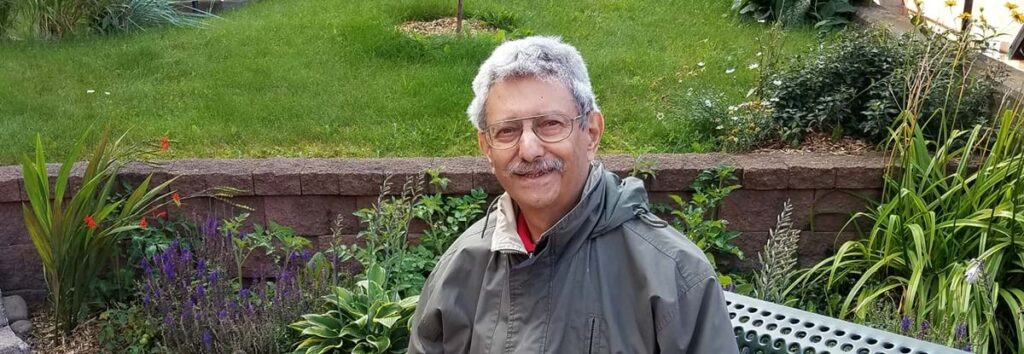#IAmNYAS: Herb Klitzner
A Lyceum Society member follows his research across decades and finds a second wind among friends and colleagues.

When you’re a 200 year-old organization there are limitless stories to tell about the distant past. But we also love to share tales from our much more recent past, particularly when told by some of our members who have been with the Academy for decades.
Today, we want to share the insights and perspective of long-time Member Herb Klitzner, who joined the Academy in 1970, just as he was beginning his graduate studies. He went on to work on computer-based projects with a variety of organizations, from the Port Authority of New York to Nabisco to the City University of New York (CUNY).
Tell us a little bit about what you were doing around the time you first joined the Academy.
I began my doctoral studies at CUNY Graduate Center in an innovative hybrid program combining Computer Science and Educational Psychology. I joined the then-existing Linguistics Section (because of my interest in cognition and developmental psycholinguistics) and was invited to participate in their Advisory Committee, as a graduate student representative.
A couple of particularly interesting things came up during my doctoral research. When I started in 1970, I was engrossed with the possibility of using mathematical quaternion group theory in cognitive models. I talked with Jean Piaget in 1971 at a conference and learned he had used them “from the very beginning” of his career. I experimented with these ideas for about three months and then put it aside for lack of finding local faculty knowledgeable in both quaternions and psychology to work with.
Then, in 1977, as a later part of my doctoral research and project development, I designed an innovative computer center for the blind at CUNY/Baruch College. The center still exists today, having served thousands of people for 40 years now.
I understand that your interest in quaternions, in particular, has continued for some time. Can you tell us a little bit more about the developments of this number system, which has proven very useful in understanding mechanics in three-dimensional space?
Roughly 30 years after I first became interested in the subject, Ben Goertzel, an internationally-based artificial intelligence (AI) and mathematical researcher took up the same question with a research group he organized, and wrote an elegant theoretical paper representing working memory by using “mirrorhouses,” including reflected triangles and tetrahedra represented by quaternions and octonions
And more recently, I became fascinated with the quaternion field having a Phoenix-like nature, from a historical/developmental point of view. After initially giving a talk to the Academy’s Lyceum Society and publishing the talk, I was contacted by a number of researchers interested in the subject. One of them asked me to write a book chapter for Multisensor Attitude Estimation, which I did, describing the little-known but dramatic proliferation of research and application of quaternions starting in 1985, and continuing to the present day, which rescued quaternions from their obscure reputation.
Subsequently, I published a paper with Terry Marks-Tarlow and Martin Hay, describing the potential of quaternions to model trade exchange processes in a special way, and perhaps to model perspective-shifting processes in the brain.
You’ve worked across industries and have a wide-ranging curiosity, which we’ve only gotten a small taste of here. What helps keep you interested in pursuing such rigorous topics?
My supportive matrix for this recent research came from the members of the Lyceum Society, which I joined in 2007. I joined because the Lyceum was presenting interesting programs at a monthly informal brown-bag lunch gathering at the Academy headquarters. As things turned out, joining gave me a second wind.
At the moment, I’m working on a book that grew out of a series of talks I gave at the Lyceum from 2009 through 2017. The Members of the Lyceum have offered much encouragement, advice, and humor, and many have become friends.
You’ve spent a lot of time now in the Lyceum Society. Why is it so valuable to you?
In my personal story, the success of this human chain of involvement and development began with the nurturing “think tank” atmosphere of the Lyceum Society, which increasingly functions as an imaginative and talented community within the Academy and a source of new perspectives. More of these Lyceum-catalyzed creative interactions and personal development stories can be expected to come in the future.
Established in 1993, the Lyceum Society is comprised of the Academy’s retired and semi-retired Members from diverse backgrounds and professions. Meetings feature lectures and discussions with scientists from around the world and also provide participating Members with the opportunity to give self-directed presentations and seminars based on their own specialties or new research interests. Learn more about the Lyceum Society and how you can join here.
Warning: Undefined variable $showit in /var/www/nyas_develop/nyas/public/wp-content/themes/nyas-theme-child/includes/shortcodes.php on line 1802
